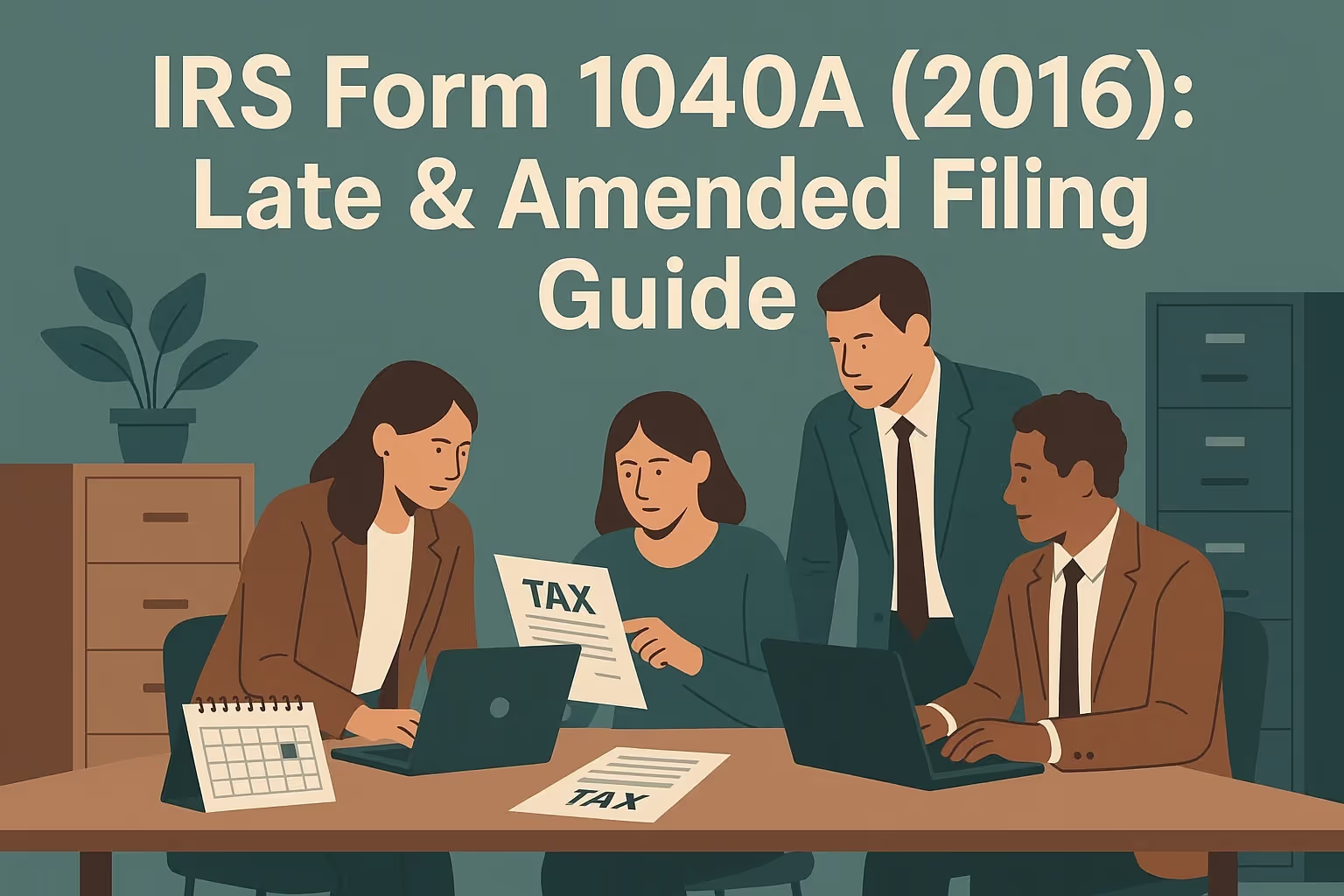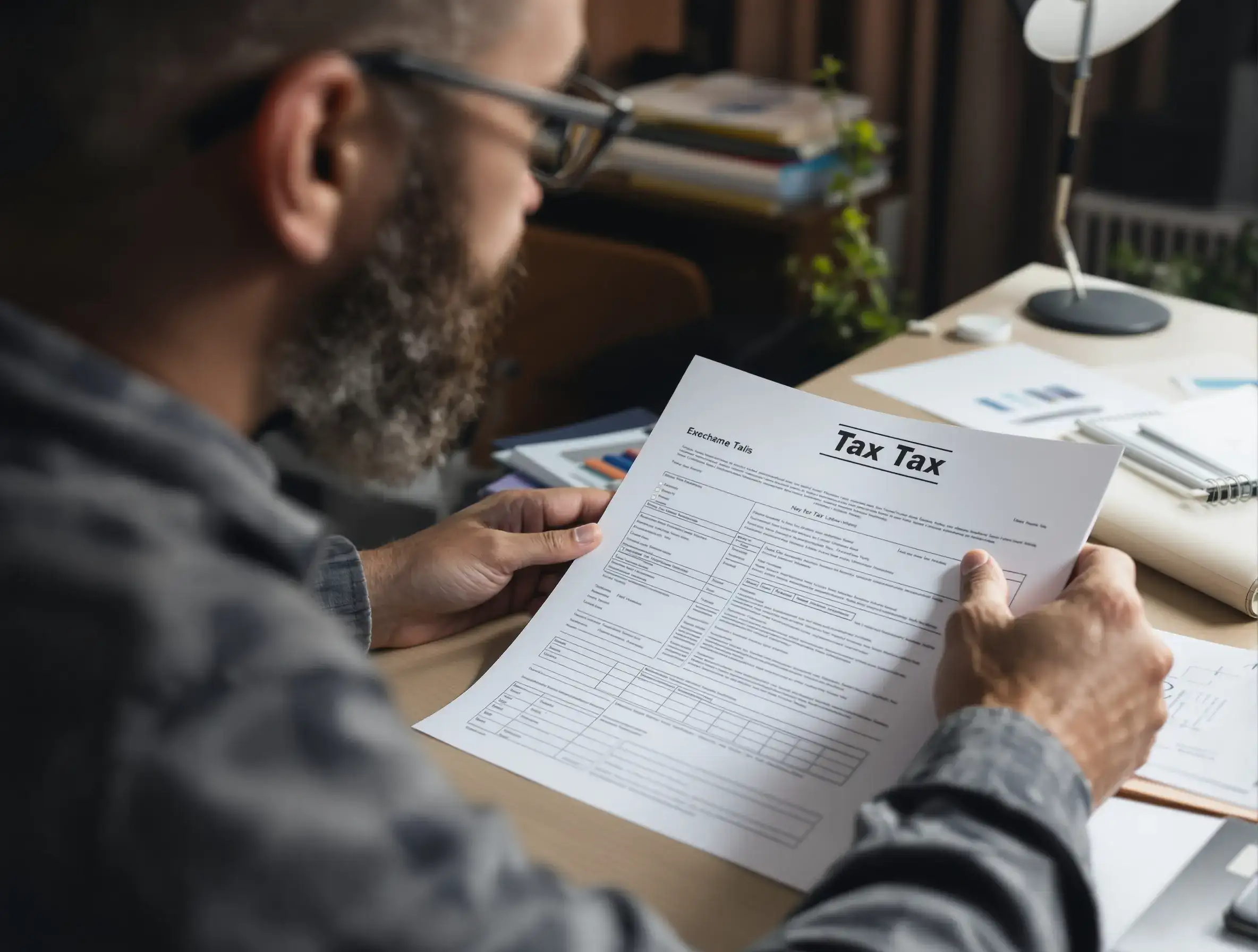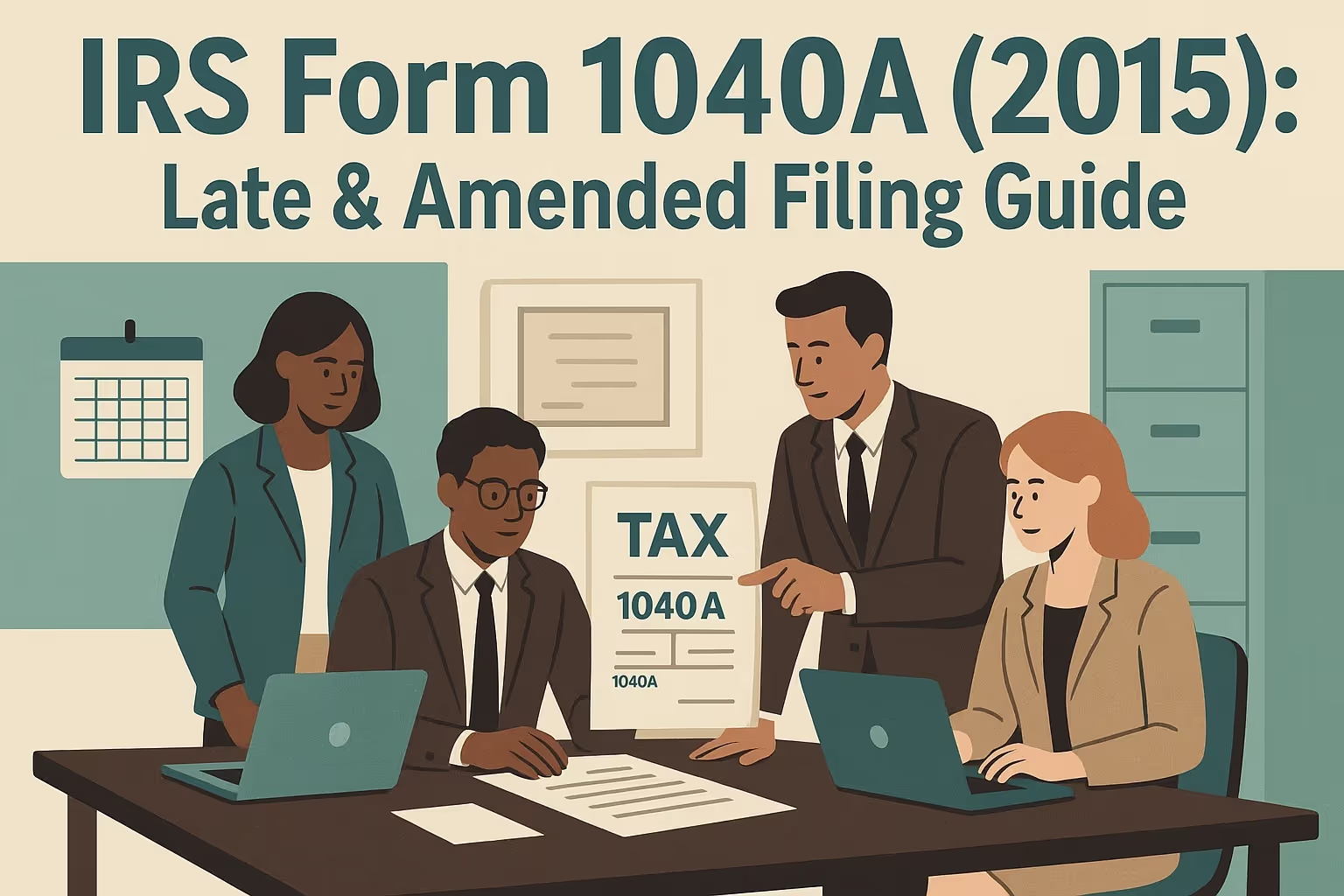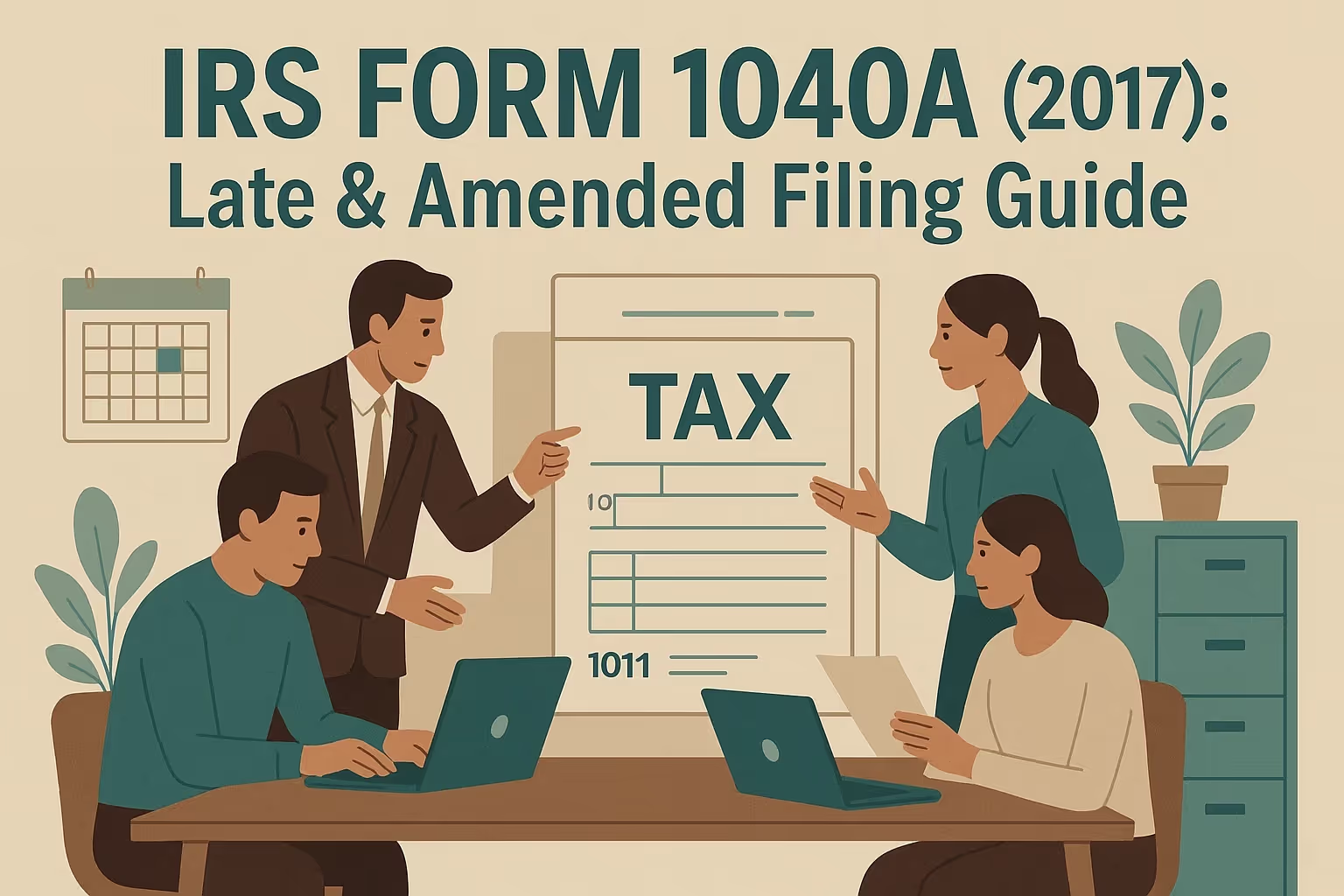IRS Form 1040A (2016): Late & Amended Filing Guide

What IRS Form 1040A (2016) Is For
IRS Form 1040A (2016) was a simplified federal income tax return used for the 2016 tax year. It allowed taxpayers with straightforward income to file using a simplified Form 1040. This short form was discontinued after 2017, but it remains required for late or amended 2016 returns if you meet eligibility requirements.
You could use it if your taxable income were under $100,000, and your deductions and credits were limited to certain types, such as educator expenses, the child tax credit, and the earned income credit. It also supported reporting unemployment compensation, Social Security benefits, and certain other types of income.
For a detailed breakdown of filing requirements, eligibility rules, and updates for this version, see our Form 1040A (2016) Instructions and Individual Taxpayers’ Guide.
When You’d Use Form 1040A for 2016 (Late or Amended Filing)
You would file Form 1040A (2016) as a late or amended return if you never filed your 2016 income tax return or need to correct a previously submitted form. Common reasons include receiving an IRS notice about an unfiled return, owing additional taxes with interest, or discovering you can claim a missed deduction or credit.
Refunds for the 2016 tax year expired on April 18, 2020, because the three-year statute of limitations has passed. You can no longer claim a refund unless exceptional circumstances, such as military service, apply. However, if you owe taxes, you should still submit your return. Penalties and interest continue to accumulate until you file.
Key Rules Specific to 2016
The 2016 tax year had particular rules for using Form 1040A. You could only file this form if your taxable income was under $100,000 and your income sources were limited to wages, dividends, interest, unemployment compensation, or certain retirement payments.
Standard deduction amounts were $6,300 for single filers, $12,600 for married filing jointly, and $9,300 for head of household. Taxpayers could not itemize deductions, but they could claim specific adjustments, such as student loan interest or educator expenses.
Form 1040A was discontinued after 2017; therefore, for any prior year returns filed after 2017, you must use Form 1040. The 2016 due date was extended from April 15 to April 18, 2017, due to the Emancipation Day holiday in Washington, D.C.
Step-by-Step (High Level)
- Gather transcripts: Request wage and income transcripts from IRS.gov/transcript to find details reported by your employer or other payers. These records help determine your total income for that year.
- Complete Form 1040A (2016): Use only the correct prior-year version, available online at IRS.gov/prior-year-forms-and-instructions. Follow the line-by-line instructions carefully.
- Attach required schedules: Include any necessary forms, such as Schedule 8962 (Premium Tax Credit) or Form 8863 (Education Credits) if you claim those benefits.
- Mail the return: Prior-year returns cannot be e-filed. Print, sign, and mail your form to the correct IRS address listed for your state. Certified mail ensures your documents arrive safely and on time.
- Keep copies: Retain copies of your complete return, W-2s, and all supporting documents for your records. You may need them to respond to IRS correspondence or verify prior payments.
Common Mistakes and How to Avoid Them
- Using the wrong form: Ensure you complete the 2016 Form 1040A, not a later version. Verify that you meet the requirements for this short form and that your income types are eligible.
- Incorrect Social Security Numbers: Double-check SSNs for yourself, your spouse, and dependents. Errors delay processing and can cause the IRS to reject your return.
- Missing or incorrect income reporting: Compare your return against all Forms W-2, 1099, or other records you receive from employers and financial institutions.
- Calculation errors: Even small math mistakes affect your tax bill. Carefully review your entries, including tax credits, deductions, and payments.
- Forgetting to sign and date: The IRS will not process unsigned returns. If filing jointly, both spouses must sign before you mail the return.
- Claiming ineligible deductions or credits: Form 1040A allows only limited deductions and credits. If you need to claim business expenses or other types of deductions, you must file Form 1040 instead.
What Happens After You File
Once you submit your return, processing usually takes six to eight weeks. If you owe taxes, the IRS will send a notice that lists the balance due, interest, and any applicable penalties. You can make payments online through IRS.gov/payments or request an installment plan using Form 9465.
If you disagree with a notice or bill, you can contact the IRS Office of Appeals. Taxpayers generally have 30 days to request a hearing after receiving a determination. Filing ensures your records remain current, even if no refund is due.
If you expect mail from the IRS, allow time for documents to arrive before taking further steps. The IRS may continue to send follow-up letters until your prior year filing is fully processed.
FAQs
Can I still get a refund for my 2016 taxes?
No, refunds for 2016 expired on April 18, 2020. You can still file the form to update your record and show compliance, but you cannot claim a refund unless an exception applies, such as military service.
Will I owe penalties for filing my 2016 return late?
Yes, if you have an outstanding balance. The failure-to-file penalty is 5% of unpaid taxes per month (up to 25%), and the failure-to-pay penalty is 0.5% per month, plus daily interest. Filing as soon as possible helps limit what you owe.
How do I get my 2016 tax transcripts?
You can find transcripts online at IRS.gov/transcript using the “Get Transcript Online” tool or by calling 1-800-908-9946. Wage and income transcripts include information reported by your employer and other payers for that tax year.
What if I can’t pay the full amount I owe?
File your income tax return anyway. You can apply for a payment plan using Form 9465 or through the IRS.gov/payments website. Submitting your form even when you can’t pay the full amount helps prevent enforcement actions.
Should I also amend my state tax return?
If your federal tax changes affect your state taxes, you may need to amend your state return. Contact your state tax agency to learn its requirements. Filing both federal and state amendments ensures accuracy and consistency.
Can I e-file a 2016 return?
No, prior-year returns, such as Form 1040A (2016), must be mailed. Print your completed form and send it with the required attachments. Look for the locked padlock icon on IRS.gov to confirm you’re on the official site when downloading forms or instructions.
What if Form 1040A doesn’t fit my situation?
If your income, deductions, or credits exceed what Form 1040A allows, file Form 1040 (2016) instead. This version supports more business deductions, other types of income, and a broader range of credits. It’s the right choice for complex tax situations or higher-income taxpayers.


























